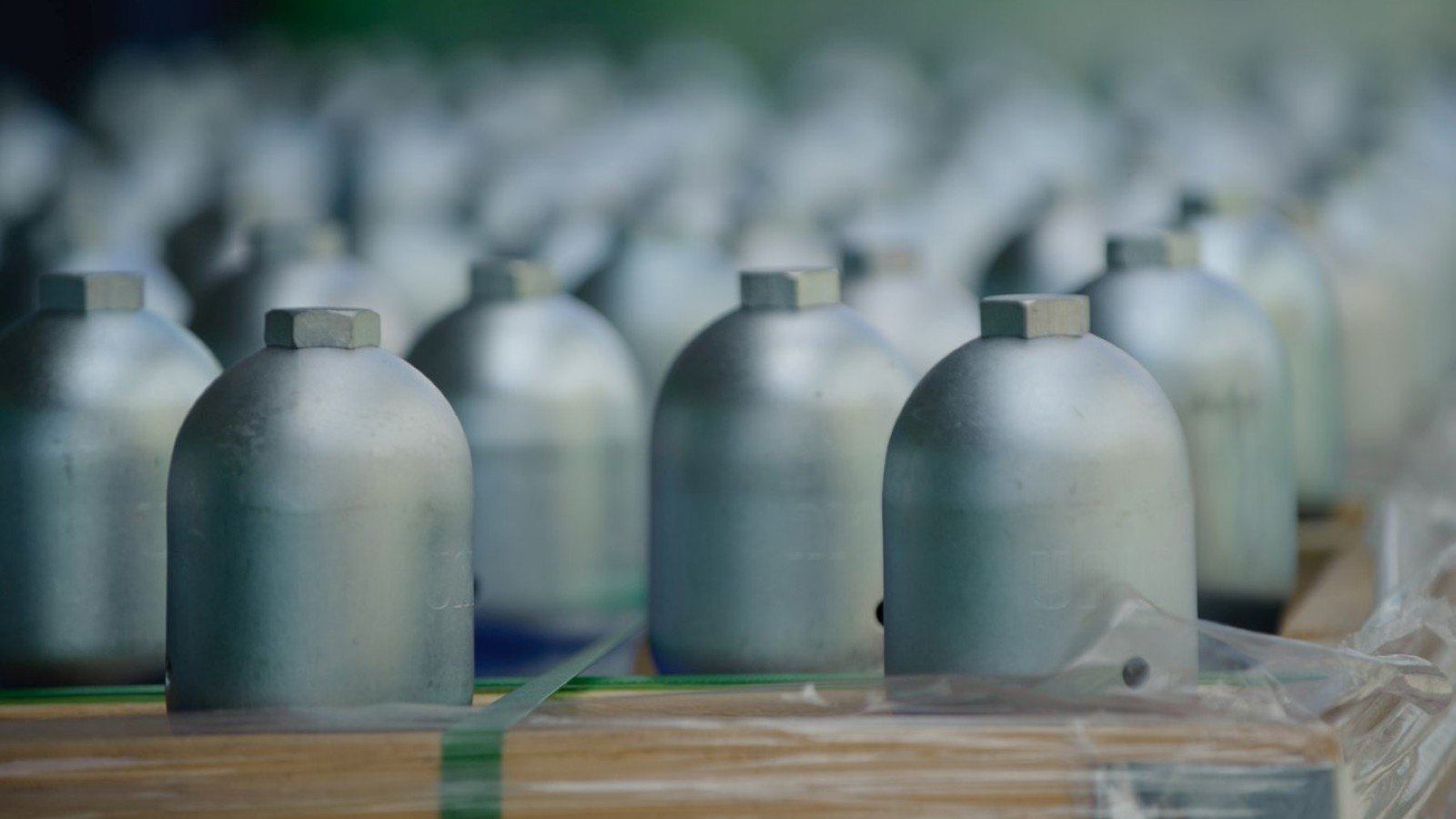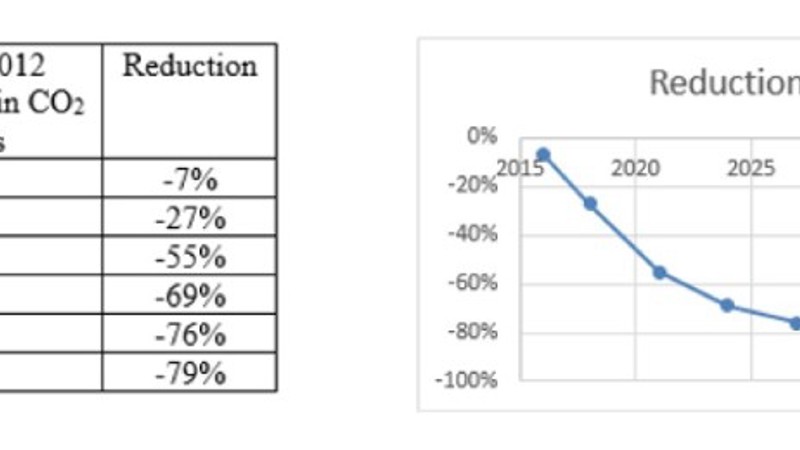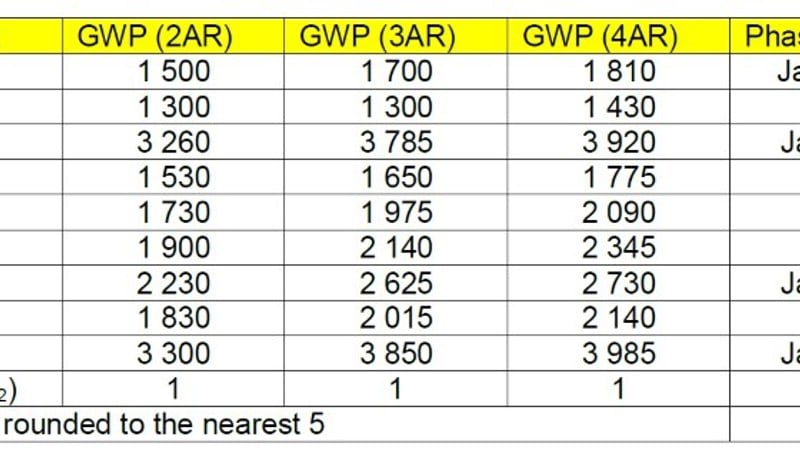Prepare for a low GWP future

Wilhelmsen insights
|
The Council of the European Union has passed the revised F-gas regulation into law, and this will change the refrigeration business, as we know it today. These regulations are specifically designed to reduce the use of Fluorinated Greenhouse gases (F-gases, or HFC’s). The aim for the regulation is to protect the environment by reducing the amounts of HFC’s (HydroFlouroCarbons) leaking into the atmosphere and contributing to the Global Warming / Greenhouse effect. The way the regulations are weighted against high-GWP refrigerants, means that R-404A and R-507 will be the two refrigerants worst hit – R-404A is today the most used refrigerant on sailing ships.
What will happen?
In the EU, a quota-system has been introduced, limiting the amount of high-GWP refrigerants placed on the market. This affects all the EU countries, and ships carrying an EU flag. The fluorinated refrigerants (HFC’s) are subject to import control based on each substance’s GWP, recalculated to CO2 equivalents. In other words, the lower the GWP the more kg’s can be placed on the market.
HFC’s with a GWP of 2 500 or more will be prohibited from January 1, 2020 in new systems and for topping up of existing systems. Reclaimed and recycled refrigerants will be permitted to be used for existing systems until 2030. (HFC refrigerants with GWP above 2 500 are R-404A, R-507, R-422D and more.)
When will this happen?
The new regulation came into force on January 1st, 2015. This means that there is a cap on import and production of HFC’s, which will not have any dramatic effect immediately. However, in the years to come there will be a reduction in the amount of HFC’s being made available in EU. In 2015, the amount of HFC’s was capped at 2009 – 2012 average volume of CO2 equivalents. From 2016 until 2030 there will be a stepwise reduction according to below graphs. In other words the EU is aiming to reduce the amount of greenhouse gases from 100% in 2015 to 21 % in 2030.

What is GWP and CO2 equivalents?
Global-warming potential (GWP) is a relative measure of how much heat a greenhouse gas traps in the atmosphere. It compares the amount of heat trapped by a certain mass of the gas in question to the amount of heat trapped by a similar mass of carbon dioxide. GWP is calculated over a specific time interval, 100 years, and is expressed as a factor of carbon dioxide (whose GWP is standardized to 1). For example, R-404A has a GWP of 3 920. This means that when one kg of R-404A is released into the atmosphere it has the same greenhouse effect (same “damage”) as 3 920 kg of CO2 (or 3.9 tons, if you like!).
In comparison, R-134a has a GWP of 1 430. In practical terms this means that one can import 10 kg of R-404A (=39 200 CO2 eq.) or 27.4 kg of R-134a (=39,200 CO2 eq.) based on CO2 equivalents. So the message is clear: Stick to the refrigerants with the lowest GWP.
GWP is calculated according to Intergovernmental Panel for Climate Change, 4th assessment report (IPCC 4AR). Please observe that there are two other ways of calculating GWP; IPCC 2AR (2nd Assessment) and IPCC 3AR (3rd Assessment), and these are used by some countries, classification societies and legislative bodies. However, the EU will base the GWP calculations on IPCC 4AR. A list of the most common refrigerants used in Marine applications and their GWP values is found below.

Will this be valid for any size system?
Yes, this is not a matter of system size, but the fluorinated gas itself. The amount of HFC refrigerant that is placed on the market will be limited in EU.
Maintenance & Service
The new F-gas regulation is introducing mandatory leak checks by certified persons. Systems with a charge
- 5 < 50 Tons CO2 eq. must be leak checked every year (2 years*)
- 50 < 500 Tons CO2 eq. must be leak checked every 6 months (12 months*)
- 500+ Tons CO2 eq. must be leak checked every 3 months (6 months*)
*= if fixed leak detection system is installed
Some examples:
- 5 Tons CO2 eq. = a system with 1.28 kg charge of R-404A
- 5 Tons CO2 eq. = a system with 3.5 kg charge of R-134a
- 50 Tons CO2 eq. = a system with 21.3 kg charge of R-417A
Getting ready for the low GWP future
The new F-gas regulation started to apply 1 January 2015, and it will affect all of us in one way or another. Do not panic, and do not ignore it. The big quota reduction comes in 2018, and the ban for R-404A in new systems comes in 2020, simultaneously with the ban on using Virgin R-404A to top up existing systems. For those who completed R-22 retrofits and thought they could sit back and relax now, I am sorry; there is a new refrigeration related challenge coming up very soon.
The EU has taken a leading role in reducing the global greenhouse effect, and it is very likely that other nations will follow in the same footsteps. It is a natural development, and the UN supports it. Denmark, Australia, Austria, Norway and Spain have all introduced Carbon Tax on the HFC refrigerants to force systems being leak checked and repaired. Even though Australia retracted the carbon tax for Synthetic Green House gases (HFC) with effect from July1, 2014, they are still working to lower the HFC emissions. The cost implications of the carbon tax for the Australian nation was too high, reducing Australian export industry’s competitiveness.
Late 2013, an agreement was made between US and India to support global phase-out of HFC’s.
It is obvious in what way development is moving, and there is an international unity that reduction of greenhouse-gas emissions is urgent and must be moved up the priority ladder.
What comes next
With the phase out of the high GWP HFC’s we need to look at the options to replace them. CO2 is environmental superclass, but system price tend to be 2 or 3 times higher than for a similar capacity HFC system.
Ammonia is an option, but there is limited knowledge and experience among operators and has higher system cost as well.
Hydrocarbons are another option, which are highly flammable and introduces some challenges on board.
Many chemical manufacturers are running their R&D departments on overtime/high gear now, to have good solutions available when the shortage of HFC’s kick in. Testing indicates that the most popular ingredients are HFOs (HydroFluoro Olefins) and R-32 (both flammable but with very low GWP), possibly in combination with some of the above-mentioned options.
One thing is for sure: These new refrigerants will be expensive, the easy days are over and the cheap prices for today’s refrigerants will soon be history. In order to keep the same expenditure for refrigerants in the future, the present leak rates will need to be reduced by some 50 – 90 %. In which case a lot has been achieved to protect the environment.
Prepare for a low GWP future.